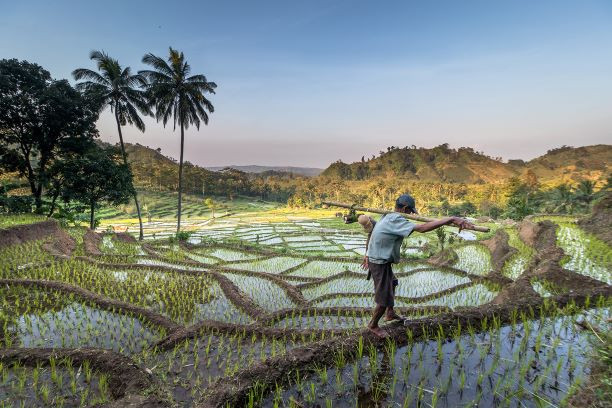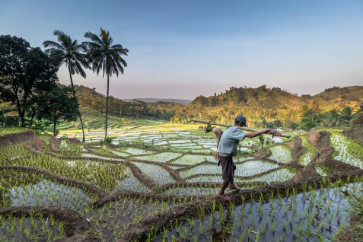Popular Reads
Top Results
Can't find what you're looking for?
View all search resultsPopular Reads
Top Results
Can't find what you're looking for?
View all search resultsAlternative pathways of agricultural development
In general, agricultural management in regions outside of Java is less intensive and productivity is relatively low due to the limitations on access to agricultural infrastructure, inputs, machine tools and technological innovations.
Change text size
Gift Premium Articles
to Anyone
T
he conventional agricultural development model, with an emphasis on the modernization of agricultural inputs and technology, has not had a significant impact on increasing agricultural productivity and has not been able to increase the prosperity of farmers, who are the main actors in national food production. In the macro context, as reported by the Global Food Security Index, in the last three years, the nation’s food security ranking has fallen from 65th to 69th globally.
A uniform approach to agricultural development does not seem appropriate because the characteristics of farmers and models of agricultural resource management in Indonesia vary widely among regions. Outside of Java, on a macro basis, the average tenure of agricultural land is still quite large, both managed by individuals and clans. In general, agricultural management in these areas is less intensive and productivity is relatively low due to the limitations on access to agricultural infrastructure, inputs, machine tools and technological innovations.
On the other hand, on the island of Java, the producer of more than half of the nation’s food, the ownership of agricultural land for food commodities is very small, less than 0.3 hectares per family, so that although access is quite good and could increase productivity, it has not been able to have a real impact on increasing production and farmer income.
As an illustration, rice, as the country’s main food commodity, which is intensively cultivated and is the mainstay of smallholders in Java with good access to various production innovations, allows an increase in productivity up to 6 tons per ha, but in aggregate it has not had a significant impact on improving the livelihoods of farming families because the land managed by farmers is very small.
In line with efforts to maintain the stability of global and national food availability, as well as guarantee the improvement of farmers' prosperity, strategies and breakthroughs are needed to revitalize the conventional policies and practices of agricultural development that have been practiced so far.
The generalist agricultural development model does not seem to suit the diverse conditions and characteristics of agriculture in various regions of Indonesia. Various strategies and approaches are needed to adapt to the characteristics and potential of available agricultural resources. At least three alternative pathways of agricultural development can be developed that have the potential to balance guaranteeing increased production and increasing agricultural prosperity.
The first path, which is prospectively developed, is a combination of small-scale consolidation of the management of staple food agriculture (rice, maize and soybeans) with the development of rural industries based on agricultural resources. Management of narrow agricultural land is generally less efficient, so it is necessary to combine agricultural land management to achieve economies of scale, for example 10 to 20 ha with the support of good management and a number of workers that meets the needs of commercial-scale businesses. With an adequate scale of business, good governance and an efficient farming system, productivity and production can be significantly increased.



















